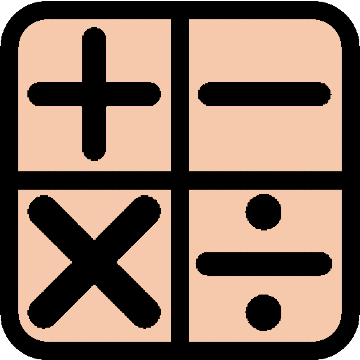MAT-03.NO.NF.05

|
3rd Grade (MAT) Targeted Standard
(NO) Number and Operations
(NF) Factions
Learners will understand fractions and equivalency to represent, compare, and perform operations of fractions and decimals.
|
MAT-03.NO.NF.05 Compare fractions of the same whole having the same numerators or denominators, using symbols >, <, and = by reasoning about their size (fractions should be limited to denominators of 2, 3, 4, 6, and 8 and should not exceed the whole).*
 Proficiency Scale Proficiency Scale
Progressions
Fractions
- MAT-03.NO.NF.02 Represent and understand a fraction as a number on a number line.
- MAT-03.NO.NF.03 Represent equivalent fractions using visual representations and number lines.
- MAT-03.NO.NF.04 Recognize whole numbers as fractions and express fractions that are equivalent to whole numbers.
- MAT-03.NO.NF.05 Compare fractions of the same whole having the same numerators or denominators, using symbols >, <, and = by reasoning about their size. (Fractions should be limited to denominators of 2, 3, 4, 6, and 8 and should not exceed the whole.)
- MAT-04.NO.NF.01 Express equivalent fractions with a denominator of 10 and a denominator of 100 to generate a decimal notation.
- MAT-04.NO.NF.02 Explain and demonstrate how a mixed number is equivalent to a fraction greater than one and how a fraction greater than one is equivalent to a mixed number using visual fraction models and reasoning strategies (proper and improper fractions limited to denominators of 2, 3, 4, 5, 6, 8, 10, 12, and 100).
- MAT-04.NO.NF.03 Generate equivalent fractions using numerical representations, visual representations, and number lines (proper and improper fractions limited to denominators of 2, 3, 4, 5, 6, 8, 10, 12, and 100).
- MAT-04.NO.NF.04 Demonstrate how equivalent fractions are generated by multiplying a fraction equivalent to 1 or the properties of multiplication (proper and improper fractions limited to 2, 3,4, 5, 6, 8, 10, 12, and 100).
- MAT-04.NO.NF.05 Compare and order fractions having unlike numerators or denominators. Record comparisons using symbols >, <, = and justify using a visual fraction model (proper and improper fractions limited to denominators of 2, 3, 4, 5, 6, 8, 10, 12, and 100).
- MAT-05.NO.NF.01 Generate equivalent forms of commonly used fractions and decimals (e.g., halves, fourths, fifths, tenths).
- MAT-06.NO.NS.01 Explain and show the relationship between non-zero rational numbers and their opposites using horizontal and vertical number lines in authentic and mathematical problems. Use rational numbers to represent quantities in authentic contexts and explain the meaning of 0 in certain situations.
- MAT-06.NO.NS.02 Write, interpret, and explain statements of order for rational numbers on a number line and in authentic contexts.
- MAT-07.NO.NS.02 Recognize common fractions and decimal equivalencies up to a denominator of 10. Convert a rational number to a decimal using technology.
|


